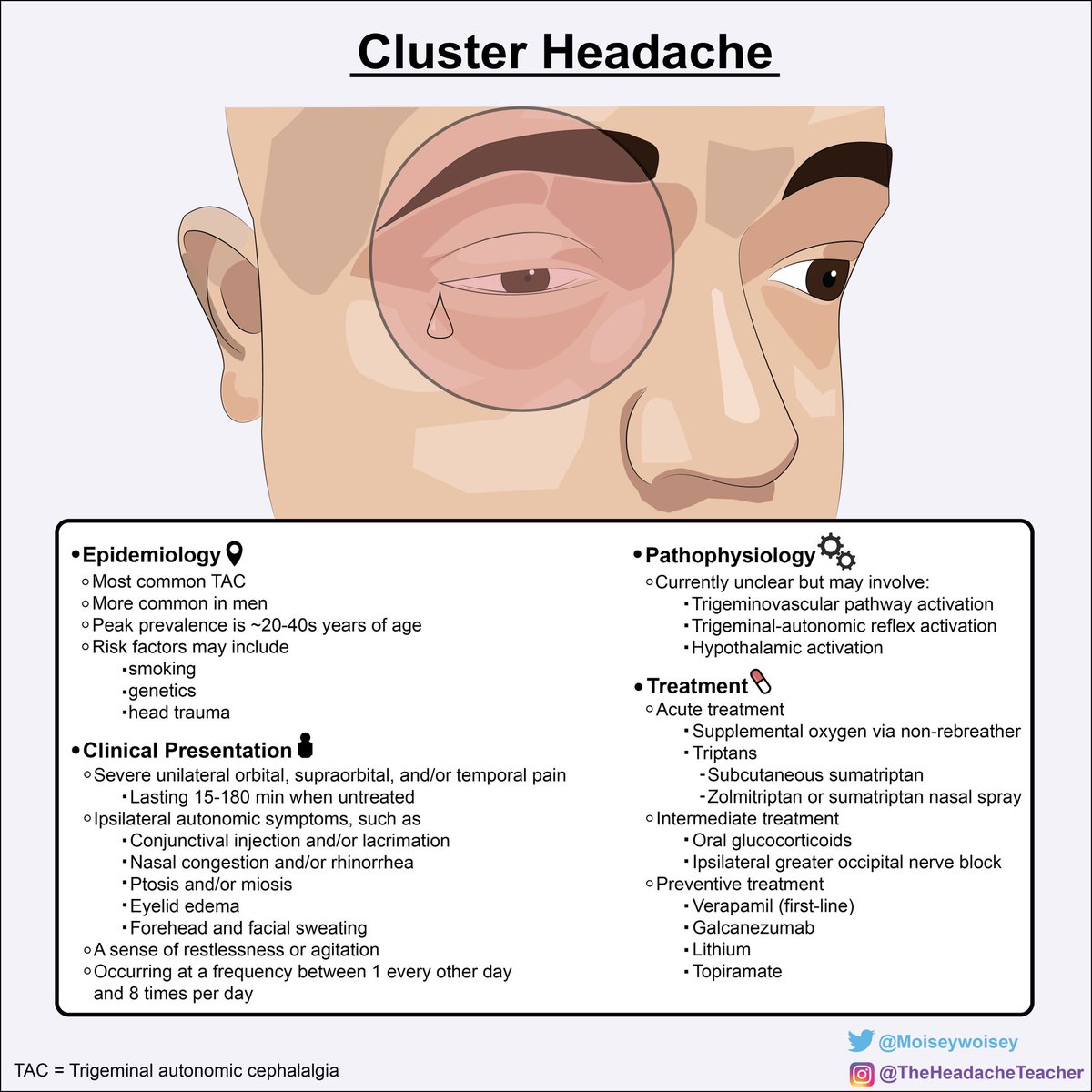
1/ Cluster headache is the most common trigeminal autonomic cephalalgia,
#clusterheadache #primaryheadachedisorder #MedEd #medicaleducation #neurology #NeuroTwitterNetwork #neurotwitter #neurophobia #neurophilia
#clusterheadache #primaryheadachedisorder #MedEd #medicaleducation #neurology #NeuroTwitterNetwork #neurotwitter #neurophobia #neurophilia

2/ and presents with excruciating unilateral orbital, supraorbital, and/or temporal pain that lasts 15-180 minutes if left untreated. Patients also have ipsilateral autonomic symptoms during a cluster attack.
3/ Although the exact pathophysiology is unclear, the trigeminovascular pathway is important for the unilateral trigeminal distribution of pain, the trigeminal-autonomic reflex is important for producing ipsilateral cranial autonomic symptoms,
4/ and the hypothalamus is important for the circadian and circannual pattern of cluster attacks, and may play a role in generating a cluster attack.
5/ Treatment of cluster headache is divided into 3 categories: acute treatment, which acutely stops an attack, intermediate treatment, which temporarily reduces the severity and/or frequency of attacks while preventive treatment takes time to take effect,
6/ and preventive treatment, which reduces the severity and frequency of attacks for a longer time. Please take a look at the infographic I have created to take with you in your studies. Happy learning!
• • •
Missing some Tweet in this thread? You can try to
force a refresh





